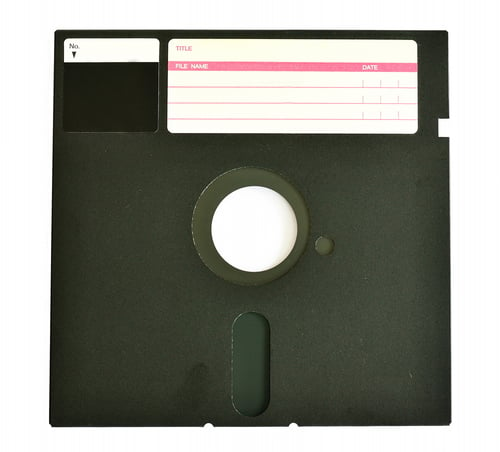This post is a continuation of my previous post about 24 years of service here at Argo Translation. In part 1, I referred to four factors that had a significant impact on me personally, on Argo, and on the industry. Below is a detailed description of those factors.
Translation memory technology
Translation memory (TM) had a considerable impact on Argo Translation and the industry. Translation memory allowed us to store our client’s translations in a database. TM technology was tremendous for clients who released similar content over time. Think of manufacturers who update their products regularly. Typically, large amounts of material are identical from release to release. This technology allows for the reuse of previously translated text, resulting in measurable time and money savings. We seized the opportunity and created a whole new way to quote translation projects. We started by creating a project management system in MS Access that would track customer sales orders and translator work orders. We were able to provide our customers with very detailed information about their projects. We were showing gross word counts, 100% matches, repetitions, and fuzzy matches, along with the discounts they earned due to the efficiencies from the translation memory database. In turn, we included this information with our translators on their work orders. We passed all of the savings on to our clients.
This level of transparency is a huge differentiator in our business model and continues to be a huge catalyst for our growth. Our proposals are still the most detailed in the business. You might ask, what is the most important benefit of this technology? We have saved our clients millions of dollars and thousands of labor hours on their translation projects due to translation memory.
Disk storage
I know this sounds boring. But you can’t imagine what an impact this had on our business. Do you remember these?
A 3 1/2-inch disk held 1.44 MB, while the 5 ¼-inch disk held 720k. If a client was sending you a large file, they had to create a multi-disk archive and send it by courier or overnight mail. There was no e-mail or FTP, and bulletin boards were just starting to come into widespread use. Most companies shipped disks back and forth. Technology began to move quickly, and the advent of SyQuest cartridges (44 MB – $100), zip disks (100 MB – $20), and finally rewriteable CDs (700 MB – approximately $5 to $10) completely changed how we exchanged files with clients. The critical thing to think about is the cost of transferring information. The SyQuest cartridges were a massive leap in terms of space, but they were $100 each and rarely made their way back to the office. Also, you needed special delivery to get it to your client quickly. Fulfillment and delivery were a considerable ordeal.
Internet speeds
When we first started, we used modems. Yes, dial-up modems that used a phone line. We started with 2400 baud (2.4 Kbit/s) and graduated all the way up to 56k (56 Kbit/s). Transferring files took forever. We used a program called PCAnywhere, which allowed you to connect to another person’s computer via modem and transfer a file. If they had a call waiting and received a call, the transfer would be interrupted. It was maddening!
For your listening pleasure:
DSL finally came along and coupled with deregulation; there were tons of providers out there. These providers went out of business at a dizzying pace. Finally, T1 service became affordable. Keep in mind that affordable means $2,400 per month for 1.54 Mbps. Today, you can get that same T1 for $199 monthly, not to mention the low-cost gigabit service most cable providers offer.
These increased speeds and the birth of email, FTP, and cloud storage eliminated having to transfer disks by courier and overnight mail. This increase significantly impacted our business and allowed us to explore cloud-based services for our critical business systems. The exchange of data with clients and translators is almost instant today.
Machine translation
Machine translation (MT) technology isn’t new. This technology has been under development since the 1960s. Technology has recently taken huge leaps forward. Google has effectively indexed vast bodies of human-translated content and formed the basis of its Google Translate engine. Neural translation adds a learning aspect to the more traditional statistics-based approach to machine translation.
The bottom line is that machine translation has had an impact. I would say that, for the most part, it has been positive. My theory is that machine translation allows for translation where it couldn’t possibly exist previously. Huh? Think of it this way. How great is it that you can load the Google Translate App and communicate (even if imperfectly) with someone in a foreign language to find a hotel or order from a menu in a restaurant? Are the results sometimes laughable? Yes. But that interaction between a tourist and a native speaker might have never happened without the technology.
The critical question is how much risk is involved if there is an error in the meaning of the translation. For a tourist trying to find a hotel, the risks are low. For a client translating software strings for a life-saving device like a defibrillator, the risks are naturally high.
From a practical business viewpoint, we only use the technology on what we call “gisting” projects. For example, this might be a research project, a massive volume project, or other projects where the time and cost required for accurate translation is far too high. Think of a legal case where you have thousands of pages to review, and the legal team isn’t even sure what pages are relevant. Why not use MT to just get a gist of the content? That allows the legal team to review the content quickly, identify essential parts of the material, and have those parts translated by humans for a higher level of accuracy.
Are translation providers using the technology and not telling their end clients? Yes. I won’t mince words on that topic. That is unacceptable. Every translation buyer should know how their translation is created. There is no room in our industry for anything less than 100% transparency.
You can learn more on this topic in a recent Translation Confidential Podcast on the subject of machine translation.
People
The most critical factor in our 23 years of service is people. We have been incredibly fortunate to have really amazing customers, employees, partners, translators, editors, and desktop publishers. This post would be incredibly long if I named everyone.
I am thankful that this large group of people place their trust in us and our services on a daily basis. Without that trust, we wouldn’t be the company we are today.
We are very proud of our history, and in honor of those who have helped Argo achieve this milestone, we have started a campaign to pledge $2,300 to charity: water, where 100% of your money brings clean water to people in need all over the globe. Please contribute to our campaign. The campaign ends in 85 days.






